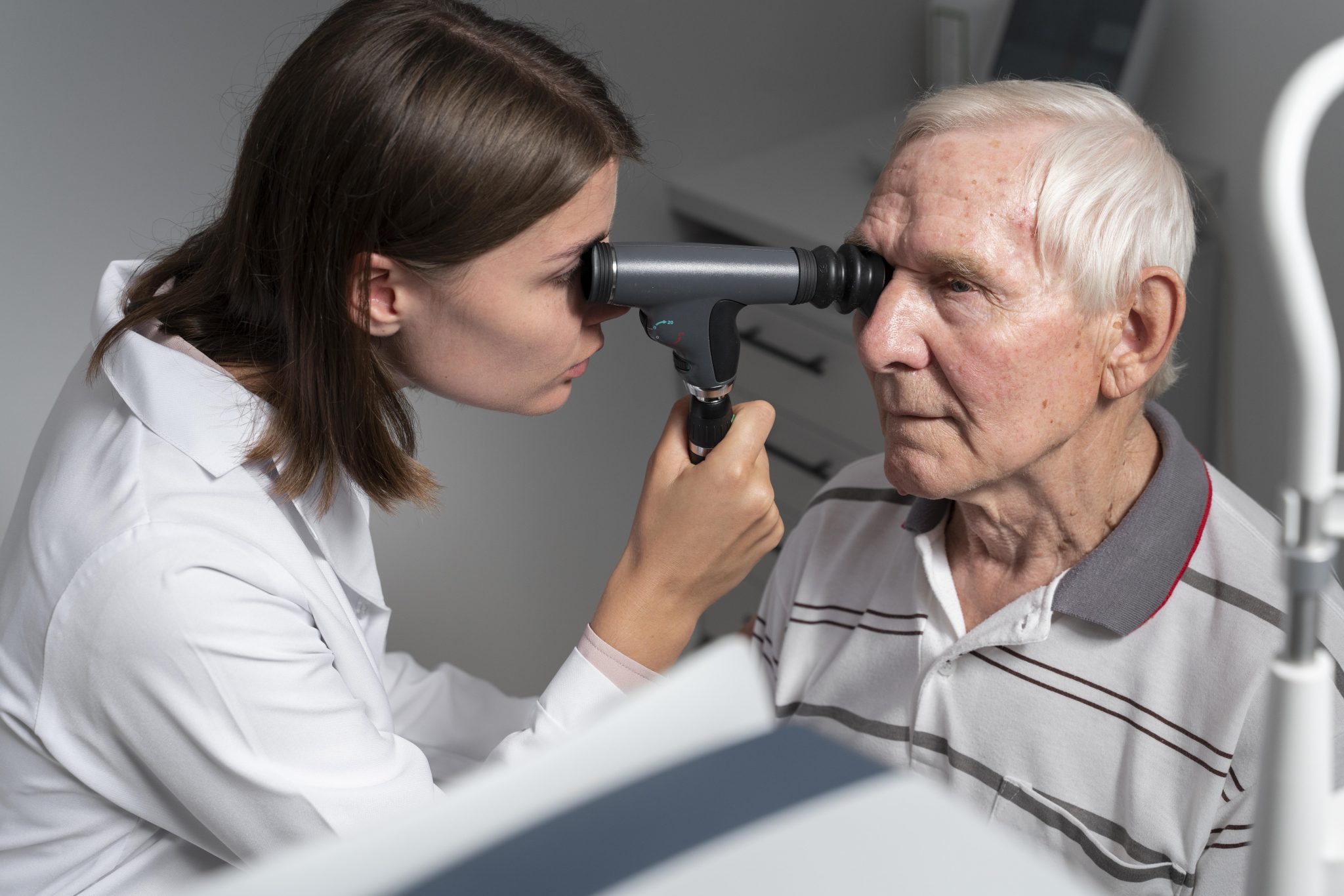Glaucoma screening services in Georgetown are essential for protecting your eyesight from this silent vision thief that affects millions of Americans. Glaucoma is often called the “silent thief of sight” because it can gradually steal your vision without any obvious symptoms in its early stages. For Georgetown residents, regular glaucoma screening appointments are one of the most important steps to protect long-term eye health and preserve quality of life for decades to come.
Understanding the critical importance of early detection and prevention, Georgetown’s medical community has made significant investments in advanced diagnostic technology and comprehensive screening programs. The American Academy of Ophthalmology emphasizes that regular screening can prevent up to 95% of glaucoma-related blindness when detected early and treated appropriately.
What is Glaucoma and Why Georgetown Residents Should Be Concerned?
Glaucoma is a group of eye diseases that damage the optic nerve, which carries visual information from your eye to your brain. This damage is often caused by increased pressure inside the eye, though it can also occur with normal eye pressure levels. According to the Glaucoma Research Foundation, without proper treatment, glaucoma can lead to permanent vision loss and even complete blindness.
The most concerning aspect of glaucoma is that it typically develops slowly and painlessly over many years. Most people don’t realize they have the condition until significant vision loss has already occurred. The American Academy of Ophthalmology reports that over 3 million Americans have glaucoma, but only half know they have it. This makes regular glaucoma screening absolutely crucial.
Georgetown’s demographics make this particularly relevant, as the community has a higher proportion of residents over 60, who face significantly increased glaucoma risk. The National Eye Institute indicates that the prevalence of glaucoma increases dramatically with age.
Comprehensive Risk Factors for Georgetown Residents
Age-Related Risk Factors: Adults over 40 are at higher risk, with the risk doubling every decade after age 40. By age 80, nearly 10% of the population has some form of glaucoma.
Genetic and Family History: If glaucoma runs in your family, you’re 4-9 times more likely to develop the condition.
Medical Conditions and Comorbidities: Diabetes, high blood pressure, heart disease, and thyroid disorders increase glaucoma risk. The American Diabetes Association notes diabetic patients are twice as likely to develop glaucoma.
Eye-Specific Conditions: High eye pressure, thin corneas, previous eye injuries, severe myopia, and prior eye surgeries increase risk.
Ethnicity and Genetic Predisposition: People of African, Hispanic, or Asian descent have significantly higher rates of certain types of glaucoma. The National Eye Institute states African Americans are 6-8 times more likely to develop glaucoma than Caucasians.
Medication-Related Risk Factors: Long-term corticosteroid use can raise intraocular pressure and glaucoma risk.
Lifestyle and Environmental Factors: Smoking, excessive alcohol use, lack of exercise, and UV exposure can contribute to glaucoma development.
The Critical Importance of Regular Glaucoma Screening in Georgetown
Glaucoma screenings include more than just eye pressure checks. Comprehensive evaluations include multiple advanced diagnostic tests that give a full picture of your optic nerve and vision health.
Early detection can mean the difference between lifelong vision and permanent loss. When identified early, glaucoma can often be treated to slow or halt its progression.
Our comprehensive eye exam services integrate seamlessly with glaucoma screening protocols to provide the most thorough evaluations possible.
Modern screening in Georgetown has become more accessible and accurate than ever. Advanced technology allows detection of glaucoma years earlier than traditional methods.
Comprehensive Glaucoma Screening Procedures in Georgetown
- Tonometry and Intraocular Pressure Measurement: Measures eye pressure via air puff or probe after numbing drops.
- Ophthalmoscopy and Optic Nerve Evaluation: Visual inspection of the optic nerve for signs of damage or cupping.
- Advanced Visual Field Testing (Perimetry): Maps peripheral vision to detect early vision loss.
- Optical Coherence Tomography (OCT): High-resolution imaging of the optic nerve and retina.
- Gonioscopy: Examines the eye’s drainage angle to determine glaucoma type.
- Pachymetry: Measures corneal thickness to better interpret pressure readings.
- Digital Optic Nerve Photography: Captures detailed images for monitoring changes over time.
- Retinal Nerve Fiber Analysis: Evaluates the health of nerve fibers around the optic nerve.
Recommended Screening Frequencies for Georgetown Residents
- Low Risk (under 40): Every 2–3 years, increasing frequency with age.
- Moderate Risk (40–65): Every 1–2 years, annually after 50.
- High Risk (65+ or multiple risk factors): Annually, possibly every 6–8 months if advised.
- Family History: Customized schedules starting earlier.
- Diabetics: Follow our diabetic eye care protocol for enhanced glaucoma screening.
Understanding Different Types of Glaucoma
Primary Open-Angle Glaucoma: The most common type, progressing slowly and often undetected without screening.
Angle-Closure Glaucoma: A medical emergency that appears suddenly. Symptoms include eye pain, nausea, blurred vision, and halos around lights.
Normal-Tension Glaucoma: Optic nerve damage occurs despite normal eye pressure. Requires advanced screening techniques to detect.
Secondary Glaucoma: Caused by eye injuries, medications, or diseases like diabetes. More common in patients with prior eye conditions.
Congenital and Pediatric Glaucoma: Rare but serious. Children with family history should be evaluated by a professional.
Advanced Treatment Options Available in Georgetown
If glaucoma is detected during your screening, patients should understand that while the condition cannot be cured, it can often be effectively managed with various advanced treatment options:
Prescription Eye Drop Medications: These are the most common first-line treatments and include classes such as prostaglandin analogs, beta-blockers, alpha-adrenergic agonists, and carbonic anhydrase inhibitors.
Oral Medications: Sometimes used alongside eye drops for enhanced pressure control in patients needing additional reduction.
Laser Treatment Procedures: Procedures like selective laser trabeculoplasty (SLT), argon laser trabeculoplasty (ALT), and laser peripheral iridotomy help improve fluid drainage from the eye.
Surgical Treatment Options: When medications and laser treatments aren’t enough, surgical methods like trabeculectomy, tube shunts, or minimally invasive glaucoma surgeries (MIGS) may be used.
The key to successful management is beginning appropriate treatment early to prevent further vision loss and maintain your independence.
State-of-the-Art Technology for Glaucoma Screening in Georgetown
At Family Optical Georgetown, we use cutting-edge diagnostic technology to ensure the most accurate glaucoma screening:
Heidelberg OCT and Spectralis Imaging: These systems provide ultra-high-resolution retinal and optic nerve images, detecting even the smallest structural changes.
Humphrey Visual Field Analyzer: This gold-standard equipment maps the full visual field with precision to catch subtle loss patterns.
Goldmann Applanation Tonometry: The most accurate method for measuring eye pressure, essential for diagnosis and monitoring.
Advanced Fundus Photography Systems: These cameras capture high-resolution images of your optic nerve, useful for long-term comparison.
Corneal Pachymetry and Topography: Tools that measure corneal thickness and shape, important in assessing risk and customizing treatment plans.
These technologies work together to provide comprehensive glaucoma screening for early detection and the best patient outcomes.
Why Georgetown Residents Choose Family Optical for Glaucoma Screening
Georgetown families trust Family Optical for glaucoma screening because we combine advanced technology with compassionate, personalized care. Our experienced optometrists understand the specific needs of our community and use the latest equipment and clinical guidelines to deliver top-tier care.
We take time to explain your results, answer your questions, and work with you to develop a plan that fits your lifestyle and health goals. Our convenient Georgetown location makes it easy to keep up with regular screenings and follow-ups.
Our contact lens fitting services also support glaucoma care, as certain contact lenses may be affected by medication or treatment side effects.
Comprehensive Follow-Up Care After Glaucoma Screening
After your screening, our team provides thorough follow-up care to ensure your eye health is managed properly:
Immediate Results Discussion: We’ll go over most test results during your visit.
Detailed Results Interpretation: You’ll receive clear explanations of each result and its significance for your eye health.
Personalized Action Plans: Based on your test results and risk factors, we’ll create a customized care or monitoring plan.
Coordinated Follow-Up Scheduling: We’ll help you book future visits according to your risk level and care needs.
Educational Resources and Support: Our team provides materials and advice to help you understand glaucoma and protect your vision.
Georgetown patients consistently rate our screening services highly for comfort, clarity, thoroughness, and long-term care support.
Take Action Today for Your Vision’s Future
Every Georgetown resident deserves a lifetime of healthy vision. Preventive glaucoma screening at Family Optical gives you the proactive care needed to catch issues early—when they’re most treatable.
Don’t let glaucoma silently take your vision. Early intervention makes a lasting difference in preserving your sight and quality of life.
📞 Call us: (905) 873-3050
📧 Email: info@familyopticalgeorgetown.com
🏢 Visit us: Georgetown Family Optical, Georgetown
Take the first step in protecting your vision. Your eyes—and your independence—deserve the best care available.





